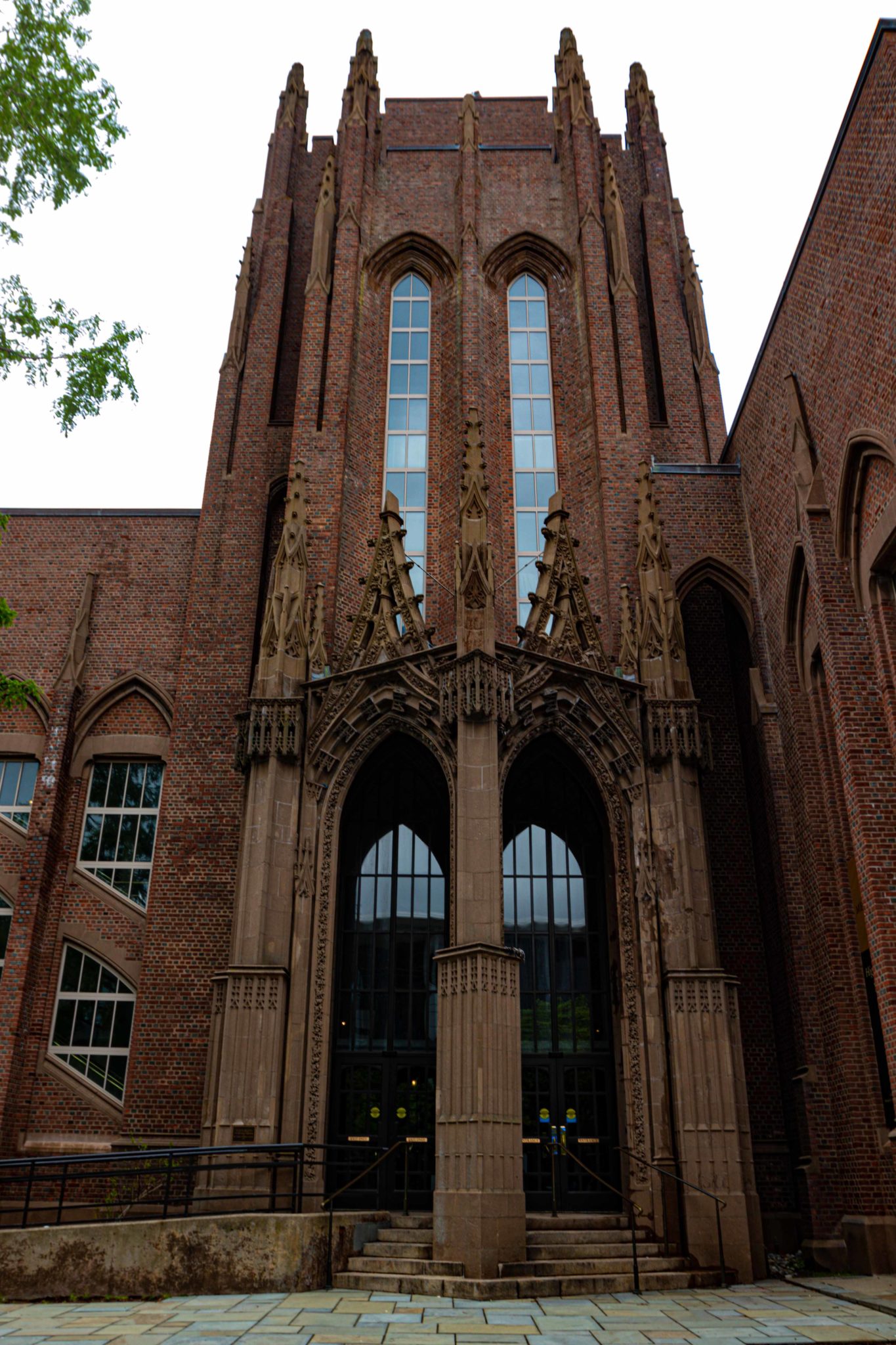
James Larson
After making progress over the summer on its $160 million renovation, Yale’s Peabody Museum of Natural History is finalizing its new design and ensuring that its 13.3 million item collection is properly stored as renovations move forward.
The renovation results in a 50 percent increase in exhibition space with a new four-floor, 45,000 gross square foot addition to the existing museum building. The renovation plans, which have focused on increasing classroom and research space, will be finalized by the end of this month.
“One goal for this project is to make the museum more deeply connected to the rest of the University,” said Director of the Peabody David Skelly. “When the museum reopens, there will be classes embedded throughout all of the galleries.”
All of the current Peabody curators are Yale faculty members who use the museum as a teaching space. But after the renovation, Skelly hopes professors across the University will also use the Peabody for teaching purposes as well. The renovations will create a space dedicated to teaching K-12 students.
In addition to the updated teaching spaces, Skelly is most excited for a permanent history of science exhibit once the renovations complete.
“This museum should represent the sciences more broadly, and the [history of science] gallery is a physical way to make that connection,” said Skelly. “I want people who are chemists, physicists, astronomers and so on to feel like — whether they’re faculty, students or members of the public — that this is a place for them too.”
Much of the progress to date has involved moving the Peabody’s collections to West Campus and other facilities for storage during construction.
“It’s been nonstop for a year and a half,” said Tim White, the Peabody’s Director of Collections and Research. “We’re actually in a phase zero. Before we can start renovating this building, we have to evacuate everything from the building.”
In December 2019, the Great Hall of Dinosaurs will close, and the museum will begin to deconstruct its skeleton mounts, namely its hallmark brontosaurus. Relocating the entire collection will take until December 2020.
“We are planning six months to evacuate the fossil halls: The Great Hall and the Mammal Hall,” White said, while also noting the importance of protecting the two Rudolph Zallinger murals in the Halls. “[In] taking [the museum’s] specimens down — some of them have been up for 75 years — there’s going to be a lot of dirt, a lot of grit. We don’t want [the murals] getting covered.”
White said that, in order to prevent specimen damage, his team is orchestrating a specific order for evacuating objects out of the halls. They have also constructed new, modernized storage space for the collection.
“If there are two things we are well known for, it’s best practices in how we handle collections and how we make them accessible,” said White. “So, we are building and designing exhibits that can be used in the teaching of undergraduate courses.”
A few of the dinosaur specimens — a pteranodon skeleton, a triceratops skull and a xiphactinus skeleton hanging from the ceiling — have already made it to their new homes in the lobby of the museum’s O.C. Marsh Lecture Hall. Located in the new Yale Science Building, the auditorium opened for classes in August.
Skelly hopes this new lecture space will allow the museum to continue its presence on campus after the exhibitions close on June 30, 2020. For the Hall’s inaugural lecture, the Peabody has invited the Secretary of the Smithsonian Institution Lonnie Bunch, to discuss his new book on Oct. 24.
“We want to fill [the lecture hall] with programming to reach both on-campus and off-campus audiences,” said Skelly. “Lonnie Bunch’s talk is a great example where there’s going to be a lot of people on campus who are going to want to see it, but a lot of public interest as well.”
The renovations were made possible by a gift from Edward P. Bass ’67, who donated one of the largest gifts in Yale’s history — $160 million — for the project.
Kate Pundyk | kate.pundyk@yale.edu







